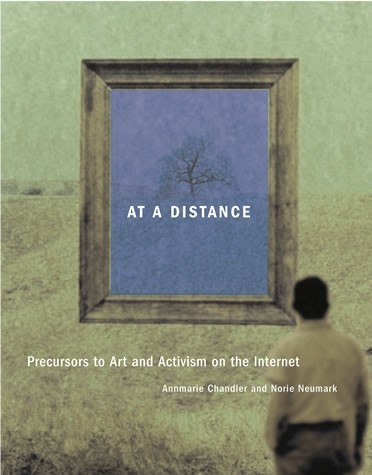CODE: Collaborative Ownership and the Digital Economy
Filed under book | Tags: · copyright, digital economy, mass collaboration, network culture

Open source software is considered by many to be a novelty and the open source movement a revolution. Yet the collaborative creation of knowledge has gone on for as long as humans have been able to communicate. CODE looks at the collaborative model of creativity—with examples ranging from collective ownership in indigenous societies to free software, academic science, and the human genome project—and finds it an alternative to proprietary frameworks for creativity based on strong intellectual property rights.
Intellectual property rights, argues Rishab Ghosh in his introduction, were ostensibly developed to increase creativity; but today, policy decisions that treat knowledge and art as if they were physical forms of property actually threaten to decrease creativity, limit public access to creativity, and discourage collaborative creativity. “Newton should have had to pay a license fee before being allowed even to see how tall the ‘shoulders of giants’ were, let alone to stand upon them,” he writes.
The contributors to CODE, from such diverse fields as economics, anthropology, law, and software development, examine collaborative creativity from a variety of perspectives, looking at new and old forms of creative collaboration and the mechanisms emerging to study them. Discussing the philosophically resonant issues of ownership, property, and the commons, they ask if the increasing application of the language of property rights to knowledge and creativity constitutes a second enclosure movement—or if the worldwide acclaim for free software signifies a renaissance of the commons. Two concluding chapters offer concrete possibilities for both alternatives, with one proposing the establishment of “positive intellectual rights” to information and another issuing a warning against the threats to networked knowledge posed by globalization.
CODE: Collaborative Ownership and the Digital Economy
By Rishab Aiyer Ghosh
Edition: illustrated
Published by MIT Press, 2005
ISBN 0262072602, 9780262072601
345 pages
preview
Review (Michel Bauwens)
Comment (0)Manuel Castells (ed.): The Network Society: A Cross-cultural Perspective (2005)
Filed under book | Tags: · digital divide, e-learning, internet, network culture, network society, social movements

Manuel Castells – one of the world’s pre-eminent social scientists – has drawn together a stellar group of contributors to explore the patterns and dynamics of the network society in its cultural and institutional diversity. The book analyzes the technological, cultural and institutional transformation of societies around the world in terms of the critical role of electronic communication networks in business, everyday life, public services, social interaction and politics. The contributors demonstrate that the network society is the new form of social organization in the Information age, replacing the Industrial society. The book analyzes processes of technological transformation in interaction with social culture in different cultural and institutional contexts: the United States of America, the United Kingdom, Finland, Russia, China, India, Canada, and Catalonia. The topics examined include business productivity, global financial markets, cultural identity, the uses of the Internet in education and health, the anti-globalization movement, political processes, media and identity, and public policies to guide technological development. Taken together these studies show that the network society adopts very different forms, depending on the cultural and institutional environments in which it evolves.
Published by Edward Elgar, 2005
ISBN 1843765055, 9781843765059
464 pages
More info (wikipedia)
More info (google books)
Annmarie Chandler, Norie Neumark (eds.): At a Distance: Precursors to Art and Activism on the Internet (2005)
Filed under book | Tags: · 1970s, 1980s, activism, art history, experimental art, fluxus, mail art, media art, network art, network culture, networks, new media, radio art, telematics

“Networked collaborations of artists did not begin on the Internet. In this multidisciplinary look at the practice of art that takes place across a distance—geographical, temporal, or emotional—theorists and practitioners examine the ways that art, activism, and media fundamentally reconfigured each other in experimental networked projects of the 1970s and 1980s. By providing a context for this work—showing that it was shaped by varying mixes of social relations, cultural strategies, and political and aesthetic concerns—At a Distance effectively refutes the widely accepted idea that networked art is technologically determined. Doing so, it provides the historical grounding needed for a more complete understanding of today’s practices of Internet art and activism and suggests the possibilities inherent in networked practice.
At a Distance traces the history and theory of such experimental art projects as Mail Art, sound and radio art, telematic art, assemblings, and Fluxus. Although the projects differed, a conceptual questioning of the “art object,” combined with a political undermining of dominant art institutional practices, animated most distance art. After a section that sets this work in historical and critical perspective, the book presents artists and others involved in this art ‘re-viewing’ their work—including experiments in ‘mini-FM’, telerobotics, networked psychoanalysis, and interactive book construction. Finally, the book recasts the history of networks from the perspectives of politics, aesthetics, economics, and cross-cultural analysis.”
Publisher MIT Press, 2005
ISBN 0262033283, 9780262033282
xiv+486 pages
Reviews: Publishers Weekly (2005), Vincent Bonin (2005), Graham Meikle (Scan, 2006), Paolo Gerbaudo (Culture Machine, 2006), Joel Slayton (Art Book, 2006), Karrie Karahalios (New Media & Society, 2006), Jennifer Way (RCCS, 2008, with responses from editors).
PDF (updated on 2019-11-22)
Comments (3)
